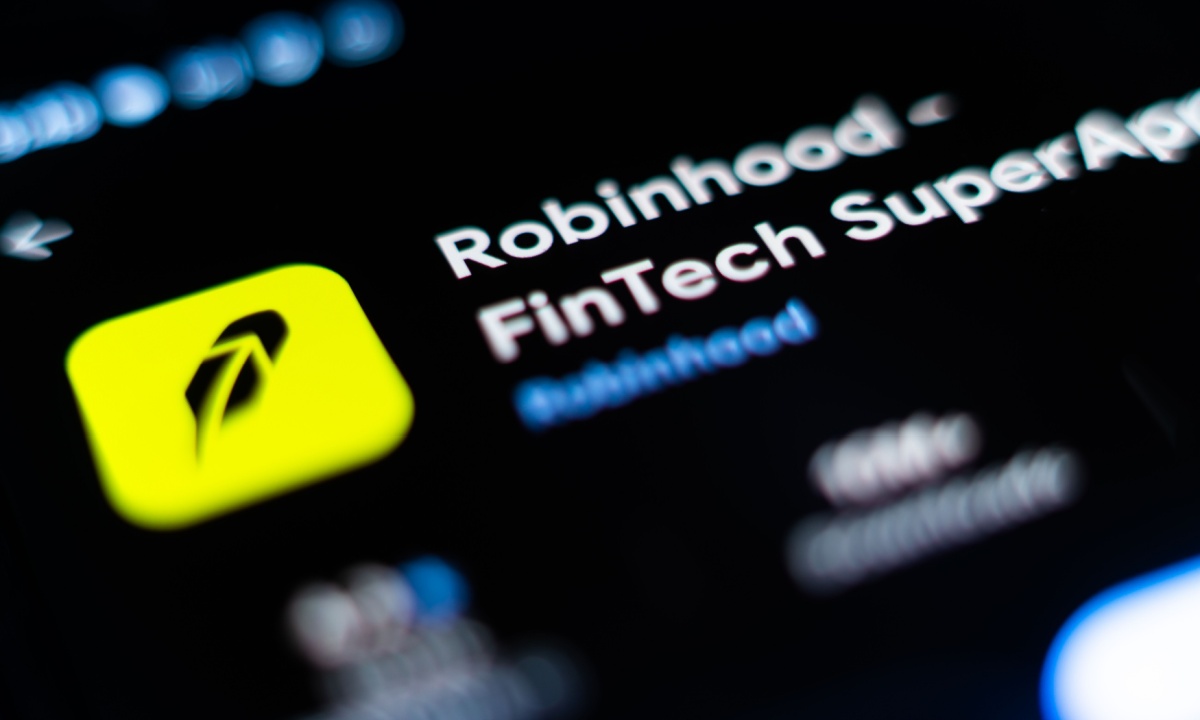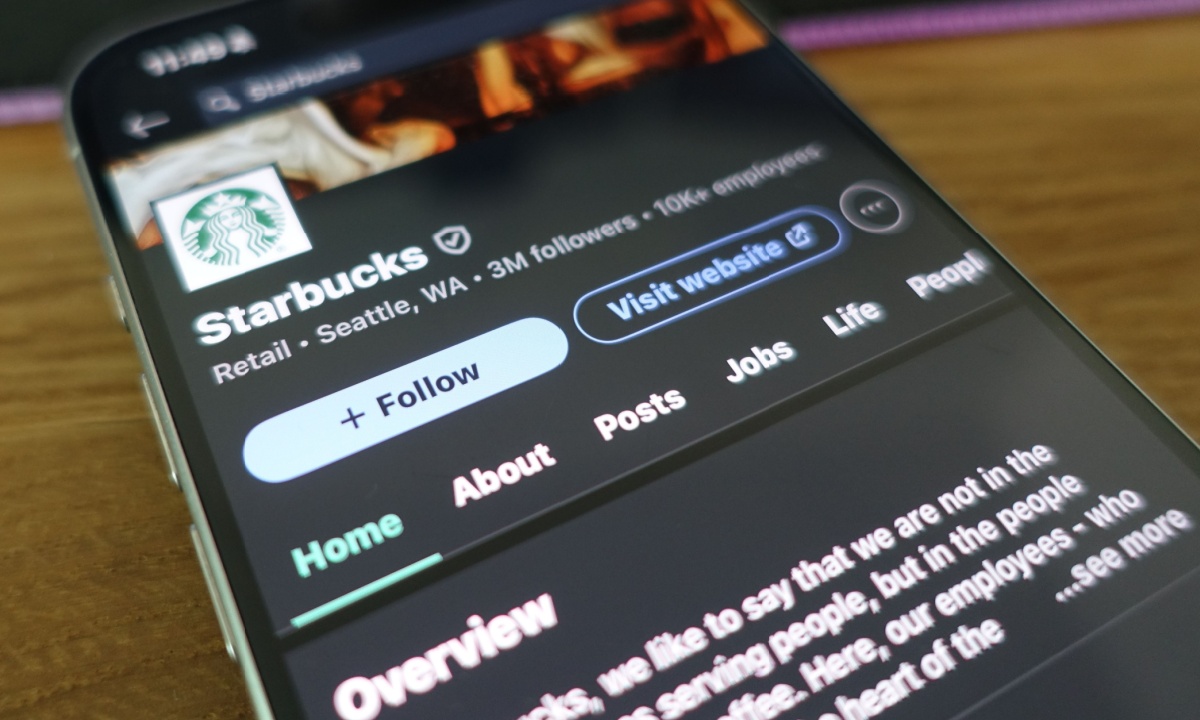Fintech
Truist Accelerates Push Into Digital Lending
Published
3 weeks agoon
By
Hrishi
Amid macro uncertainty, shifting interest rate dynamics and a skeptical market, mitigating risk while unlocking new growth is the name of the game for lenders as they search for relevance in a rapidly transforming banking landscape.
That was the theme of the executive commentary during Truist’s Friday (July 18) second-quarter 2025 earnings call, where company leaders told investors that they were determined to stare down headwinds, in part by leaning on strategic digital innovation to drive performance.
“We delivered strong second-quarter results, driven by strategic loan growth and higher net interest income,” said CEO Bill Rogers, emphasizing the company’s resilience and consistency.
And while the bank’s fee income for the quarter lagged, and credit remained stable, Truist was able to score wins elsewhere — particularly in consumer banking and digital engagement. The bank added roughly 37,000 new checking accounts in Q2, marking the fifth straight quarter of net growth. Its digital acquisition channel now accounts for 43% of new accounts, up from 34% a year ago.
“We’re seeing real momentum in client primacy and digital activation,” said Rogers.
Read more: Truist Says 80% of Transactions Self-Service as Mobile Banking Surges
Chasing Stability in a Rising-Risk Environment
During Friday’s call, Rogers and CFO Mike Maguire repeatedly stressed their 2025 goals: digital modernization, loan growth, stable expenses and strategic reinvestment.
At the core of Truist’s performance was its net interest income (NII), which increased by 2.3% to $3.64 billion quarter over quarter. The bank managed to maintain a net interest margin of 3.02%, up a single basis point sequentially — largely stable despite volatile rate expectations and slowing Fed policy.
Loan growth drove the expansion. Average loans and leases rose $6.2 billion, or 2.0%, over Q1, boosted by new originations in consumer lending, residential mortgages, and commercial and industrial (C&I) segments.
But margins were under pressure. Deposit costs rose to 1.85%, up 6 basis points sequentially, while the yield on total loans increased only 4 basis point
This was balanced on a growth roadmap basis by the fact that Truist’s digital usage was up across the board. Over 1.8 million clients used digital financial management tools, a 40% year-over-year increase, while the lender’s new Plan & Track dashboard helped drive a 30% boost in digital engagement.
At the same time, Truist’s LightStream platform has now been fully integrated into its broader digital ecosystem — rebranded “LightStream by Truist” — to push further into the prime digital lending space.
According to research from PYMNTS Intelligence and i2c, small and medioum-sized businesses (SMBs) want fewer fees and better service, and that’s where community banks can shine compared to larger, legacy financial institutions.
See also: OCC Finds Outdated Core Systems Threaten Future of US Regional Banks
Looking Ahead While Betting on the Back Half
Despite the solid results, investor sentiment was muted. Truist shares dipped following the announcement, with analysts pointing to weak fee income and rising provisions as dampers.
Truist management offered cautious optimism for the second half of 2025. Investment banking and trading, while soft now, are “positioned for recovery,” the bank said. Net interest income is expected to grow approximately 3% for the full year, aided by modest loan growth and fixed asset repricing.
That said, the environment remains uncertain. Pressure on deposit costs, unpredictable capital markets, and potential regulatory shifts are all in play. Truist’s forecast assumes two 25-basis-point Fed rate cuts in the back half of the year.
Still, the tone from leadership was confident. “We’re staying on offense,” said Rogers, “with a clear strategic focus, a strong balance sheet, and an unwavering commitment to purpose.”
Findings from the “Credit Union Innovation Readiness Index: The Smallest Credit Unions Step It Up,” a PYMNTS Intelligence and Velera collaboration, reveal that, when it comes to innovation, smaller lenders aren’t standing still, and one of the advantages of smaller banks is their ability to adopt collaborative models.
You may like
Fintech
Fed Lets Banks Get Tax Information Numbers From Third Parties | PYMNTS.com
Published
32 minutes agoon
August 1, 2025By
Hrishi
The Federal Reserve said Thursday (July 31) it joined other federal banking agencies in allowing banks and credit unions to obtain customers’ tax information numbers from a third party, rather than directly from the customer.
This alternative collection method allowed by this order is optional, and banks are not required to use it, the Fed said in a Thursday press release.
“By law, banks and credit unions are required to verify the identity of a potential customer by obtaining certain identifying information before opening an account,” the release said. “Since this requirement’s implementation in 2003, there have been considerable changes in the way that customers interact with banks and receive financial services. Today’s action will grant banks flexibility in how they obtain this information, while ensuring that risk-based procedures continue to underpin verification of a customer’s identity.”
The Fed said in the release that it coordinated its action with the Federal Deposit Insurance Corporation (FDIC), the Office of the Comptroller of the Currency (OCC), the National Credit Union Administration (NCUA) and the Treasury Department’s Financial Crimes Enforcement Network (FinCEN).
The Board of Governors of the Federal Reserve System voted unanimously to approve this action on July 24, according to the Fed’s website.
FinCEN issued its order allowing banks to collect tax identification number information from a third party, rather than from the financial institution’s customer, on June 27. It said it did so in coordination with the OCC, FDIC and NCUA.
It did so after issuing a request for information on its Customer Identification Program (CIP) requirements for banks in March 2024 and saying it was exploring ways to modernize these requirements.
When announcing its order on June 27, FinCEN Director Andrea Gacki said the organization recognized the changes that have occurred since the initial requirement was enacted into law under the USA PATRIOT Act.
“This order reduces burden by providing banks with greater flexibility in determining how to fulfill their existing regulatory obligations without presenting a heightened risk of money laundering, terrorist financing or other illicit finance activity,” Gacki said in a press release.
PYMNTS reported June 30 that the rule changes pave the path for banks to more actively utilize platforms and artificial intelligence to remain in compliance and blunt fraud.
Fintech
Robinhood Rides Crypto Surge, Bitstamp Deal to Nearly $1B Revenue | PYMNTS.com
Published
1 day agoon
July 31, 2025By
Hrishi
Robinhood Markets on Wednesday (July 30) delivered second-quarter 2025 results that reveal a company pivoting sharply from its roots in commission-free retail trading toward a diversified, multilane financial platform.
The company’s Q2 2025 earnings showed a 45% year-over-year revenue surge to $989 million and a doubling of diluted earnings per share to $0.42.
“We delivered strong business results in Q2 driven by relentless product velocity, and we launched tokenization — which I believe is the biggest innovation our industry has seen in the past decade,” said Vlad Tenev, chairman and CEO of Robinhood.
“Q2 was another great quarter as we drove market share gains, closed the acquisition of Bitstamp and remained disciplined on expenses,” added Jason Warnick, CFO of Robinhood. “And Q3 is off to a great start in July, as customers accelerated their net deposits to around $6 billion and leaned in with strong trading across categories.”
The company ended the quarter with $279 billion in platform assets — up 99% year over year — and $13.8 billion in net deposits. Funded accounts reached 26.5 million, a 10% gain, and cash sweep balances rose 56% to $32.7 billion, reflecting deeper wallet share per customer.
Despite the strong earnings, Robinhood’s share price remained relatively flat in after-hours trading, as of reporting.
Read more: Wall Street Moves On-Chain as Tokenization of US Stocks Goes Global
Crypto Expansion Matures
For years, Robinhood’s crypto offering was primarily a retail gateway — an accessible on-ramp for users to dabble in bitcoin, ethereum, and other digital assets. In Q2 2025, however, the company demonstrated its ability to scale its crypto ambitions.
Revenues from crypto-related products climbed 98% year-over-year to $160 million, while total notional crypto trading volumes hit $35 billion.
Much of that surge can be attributed to the June acquisition of Bitstamp, a legacy exchange with deep roots in Europe and over 50 regulatory licenses across major jurisdictions. Notably, $7 billion in Q2 crypto volume came from Bitstamp alone, indicating rapid onboarding of its institutional client base.
With Bitstamp, Robinhood gains more than trading infrastructure — it secures compliance credibility, cross-border licensing, and a level of operational maturity essential for institutional trust. The deal allows Robinhood to fast-track services like crypto staking, which is now available to eligible U.S. users, and stock tokenization, which enables investors in Europe to trade over 200 U.S. equities in tokenized form.
Tenev stressed to investors that the Bitstamp acquisition “instantly globalizes our crypto footprint and bridges us to institutional demand in a way that’s hard to replicate organically.”
At the same time, historically dismissed by financial elites as a gamified millennial platform, Robinhood is making strides to rebrand itself as a serious contender in the institutional arena. The Bitstamp acquisition is only part of that story. The company is also in the process of acquiring WonderFi, a Canadian digital asset platform specializing in decentralized finance (DeFi) tools and tokenized asset services.
Infrastructure and Credibility
Set to close in the second half of 2025, the WonderFi deal is expected to expand Robinhood’s footprint in North America and deepen its capacity to offer programmable finance products.
Internally, Robinhood has begun to lay down institutional-grade infrastructure, including custody solutions, anti-money laundering and know-your-customer processes, and advanced trading engines. With Bitstamp’s regulatory muscle and WonderFi’s technology stack, Robinhood appears poised to rival firms like Coinbase or Galaxy in the lucrative middle ground between traditional finance and crypto-native platforms.
Beyond digital assets, Robinhood’s Q2 also demonstrated growth in core FinTech verticals — specifically those aimed at long-term customer lifetime value rather than one-off trades. Robinhood Gold, the company’s premium subscription offering, reached a record 3.5 million members, up 76% year-over-year. That growth has lifted average revenue per user to $151, a 34% annual increase.
Robinhood Banking, in internal beta, is slated for public rollout later this quarter. The product aims to bring private banking features — such as high-yield savings, estate planning, and net worth tracking — to the mass market.
Still, regulatory headwinds also loom large. Crypto staking and tokenization, two of Robinhood’s most promising innovations, face uncertain regulatory treatment in both the U.S. and Europe. SEC scrutiny of digital asset products, along with evolving interpretations of tokenized securities, could force strategic recalibrations.
“Tokenization will do for stocks what stablecoins did for fiat,” Tenev said.
Fintech
Starbucks Revitalization Initiative to Shift Focus to App and Rewards | PYMNTS.com
Published
2 days agoon
July 30, 2025By
Hrishi
Starbucks plans to enhance its mobile app, its mobile order-and-pay offering, and its rewards program in 2026 as it continues its “Back to Starbucks” plan for revitalizing the coffeehouse brand.
Company executives said this during a Tuesday (July 29) earnings call in which they reported a decline in comparable store sales but pointed to other metrics they said highlight the progress Starbucks is making with its plan.
“This quarter, we’ve made meaningful progress, and we are ahead of our expectations,” Starbucks Chairman and CEO Brian Niccol said during the call. “We’re moving quickly to transform both the business and the culture. We’re testing, learning and focusing on the work that has the biggest impact, fixing the operational foundations of the business and building a platform for innovation in 2026.”
Niccol announced the “Back to Starbucks” plan in October, saying the company aimed to revitalize its U.S. operations and elevate the customer experience by prioritizing coffee quality and ensuring baristas have the support they need to deliver exceptional service.
During the quarter ended June 25, Starbucks saw its global comparable store sales decline 2%, with its North America business down 2% and its international business flat, according to a Tuesday earnings release.
“While our financial results for the quarter don’t yet reflect all the progress we’ve made, I see meaningful signs from across our U.S. business that we’re on the right path,” Niccol said.
For example, Niccol said, Starbucks found that its retail partner engagement scores are up, its coffeehouse leader engagement is near historic highs, and its shift completion is at a record high.
In addition, Niccol said, customer connection scores are up, customer complaints are down, and customer value perceptions are near two-year highs.
In the digital realm, the Starbucks app is highly rated, and the company has one of the largest social media communities in the industry, Niccol said.
“These strengths and signs of progress are why I remain confident in our ability to win,” Niccol said.
In early 2026, Niccol said, Starbucks will launch “significant innovations” in its rewards program that address customer feedback and add new features to grow loyalty, “brand love” and engagement. Niccol added that the rewards program is a “huge asset” for the company, with nearly 34 million 90-day active members.
The company will also launch a new Starbucks app as well as enhancements to its mobile order and pay offering.
“In 2026, we’ll unleash a wave of innovation that fuels growth, elevates customer service and ensures everyone experiences the very best of Starbucks,” Niccols said in an “earnings at a glance” sheet released Tuesday. “We’re building back a better Starbucks experience and a better business.”
Trending

 Fintech1 week ago
Fintech1 week agoOpenAI and UK Government Partner on AI Infrastructure and Deployment

 Latest Tech News2 weeks ago
Latest Tech News2 weeks agoThe tech that the US Post Office gave us

 Cyber Security1 week ago
Cyber Security1 week agoMicrosoft Fix Targets Attacks on SharePoint Zero-Day – Krebs on Security

 Latest Tech News1 week ago
Latest Tech News1 week agoTrump wanted to break up Nvidia — but then its CEO won him over

 Artificial Intelligence2 weeks ago
Artificial Intelligence2 weeks agoApple loses key AI leader to Meta

 Cyber Security1 week ago
Cyber Security1 week agoPhishers Target Aviation Execs to Scam Customers – Krebs on Security

 Latest Tech News6 days ago
Latest Tech News6 days agoGPD’s monster Strix Halo handheld requires a battery ‘backpack’ or a 180W charger

 Artificial Intelligence1 week ago
Artificial Intelligence1 week agoWhy Apple is playing it slow with AI

















